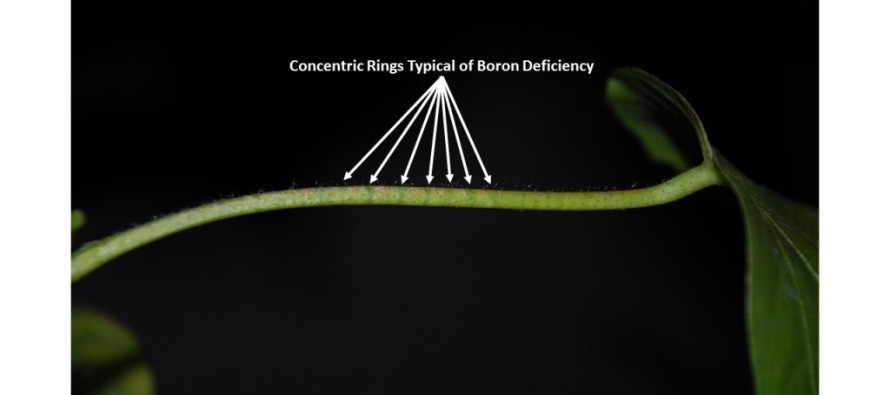Cotton Nutrient Deficiency – Boron

Boron is a micronutrient that plays a role in cell wall structure and the formation of proteins within plants. Boron deficiency is more common in younger leaf tissue toward the top of the cotton plant. Deficiency symptoms may appear as distorted and/or stunted terminals; abnormal uppermost leaves, and aborted flowers. Additional deficiency symptoms may appear as “coon-tailing” on the petioles and/or petioles that are shorter and thicker than those in healthy plants. In severe situations, flower abortion and boll shedding may occur which can result in excessive vegetative growth and reduced yields. An example of “coon-tailing” can be seen in the image below.
Boron is very water soluble and deficiency is related to soil type, organic matter content, timing of lime application (soil pH), and region of the state. Boron availability decreases with increasing soil pH. Boron availability also decreases under drought conditions. Generally speaking, the Delta region does not respond to boron applications. Recommendations for boron applications vary between states with some recommending larger quantities than others. Keep in mind that the concentration range between boron deficiency and toxicity is narrow. If you suspect your soil is deficient in boron, Mississippi State recommends applying 1/3 to 1/2 pound of boron. Yield enhancement from boron application is rare in Mississippi.





Let me tell You a sad story ! There are no comments yet, but You can be first one to comment this article.
Write a comment